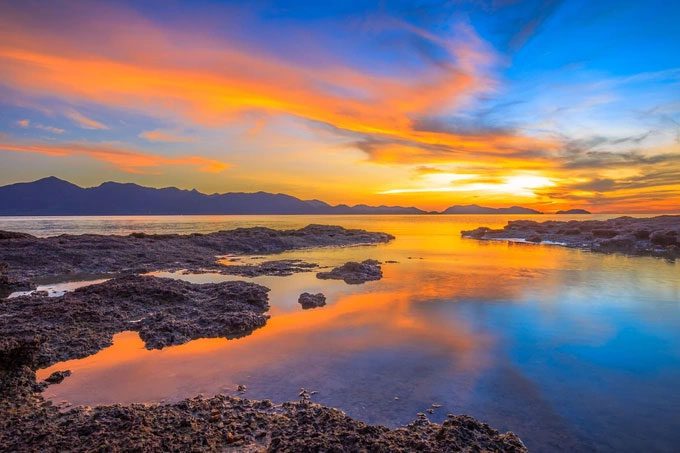Where Does the Sun Rise First Each Day and Which Place Welcomes the Dawn First When the New Year Arrives?
On our spinning globe, the Sun continuously rises and sets across the horizon. But where does the Sun rise first each day? And with the early sunsets in 2022, which location will greet the first light of the upcoming New Year?

Where on Earth is the first place to see the Sun rise above the horizon? (Photo: somnuk krobkum).
According to theoretical astrophysicist Dr. Cameron Hummels, from a physics standpoint, there is no definitive place where the Sun rises “first.” Instead, there are various interpretations of the Sun’s perpetual rise occurring progressively further west.
However, to keep track of time, humanity has established a system of timekeeping, which includes time zones and the International Date Line to mark when a day begins and ends in each location on Earth. “Thus, the place where the Sun rises ‘first’ is essentially agreed upon according to the International Date Line,” Hummels explains.
The International Date Line runs through the Pacific Ocean, primarily along the 180th meridian. For the most part, it is a straight line, but there are sections where it deviates to avoid splitting a country into two time zones for political or economic reasons. For instance, the International Date Line juts out nearly 3,200 km eastward around the Kiribati islands located on the equator. Kiribati lies in the earliest time zone on Earth, UTC+14, which means that for most of the year, Kiribati will welcome the first dawn each day.
Specifically, in the Kiribati archipelago, Millennium Island, also known as Caroline Island, is uninhabited and located at the extreme east of Kiribati, making it the first place on Earth to greet the dawn.
However, it is not always Millennium Island. The Earth is tilted at an angle of 23.5 degrees relative to its orbit, causing sunlight to illuminate our planet differently throughout the year. During the Winter Solstice on December 21 or 22, the Sun shines more in the Southern Hemisphere, where Antarctica and most of the Southern continent receive 24 hours of daylight, meaning there is effectively no dawn or sunset here.
However, if we consider the location at 66.6 degrees South, we find that the Sun only dips briefly below the horizon before rising again, creating dawn just a few minutes after midnight. Therefore, Young Island, an uninhabited island belonging to New Zealand, occasionally experiences the first dawn for several days and weeks around the solstice, including January 1.
Despite this, according to the U.S. Naval Observatory, Young Island is only the first place to witness dawn about 10 to 15% of the time each year. For the remainder, the atmospheric refraction effect is so strong that you can still see sunlight on Young Island even when the Sun has dipped below the horizon, making it difficult to determine the actual time of sunset or dawn. On such days, Dibble Glacier, a peninsula on the Antarctic coast, becomes the first place to greet the dawn.
Around the time of the Summer Solstice, approximately from June 20 to June 22, the Sun shines more directly on the Northern Hemisphere than the Southern Hemisphere. Thus, the first dawn will occur further north. The International Date Line winds between Russia and Alaska through the Bering Strait. This line divides the Diomede Islands. Big Diomede Island belongs to Russia, while Little Diomede Island belongs to the United States. In the weeks or even months leading up to June 21, the Russian island is the first place to greet the dawn in the world.





















































